#tsugumi ohba
Explore tagged Tumblr posts
Text

Platinum End Volume 7 (Story by Tsugumi Ohba, Art by Takeshi Obata)
15 notes
·
View notes
Text

#Death note#Tsugumi Ohba#Takeshi Obata#manga#manga cap#mangacap#manga aesthetic#manga panel#manga art#b/w#black and white aesthetic#2000s#Y2k#manga and stuff#Light Yagami#light Yagami death note#manga boy#manga guy#Evil
24 notes
·
View notes
Text

#Naomi Misora#squidolusreads!#death note#tsugumi ohba#takeshi obata#viz media#young adult#Light#light yagami#death note volume 2#shinigami#l#l lawliet#anime#anime and manga#manga art#death note anime#death note manga
79 notes
·
View notes
Text

mello scraps for my dn followers
#mello death note#mello#mihael keehl#death note#takeshi obata#tsugumi ohba#manga#anime#art#traditional art#pink#ballpoint pen#faber castell#sketchbook#character design#my art
66 notes
·
View notes
Text
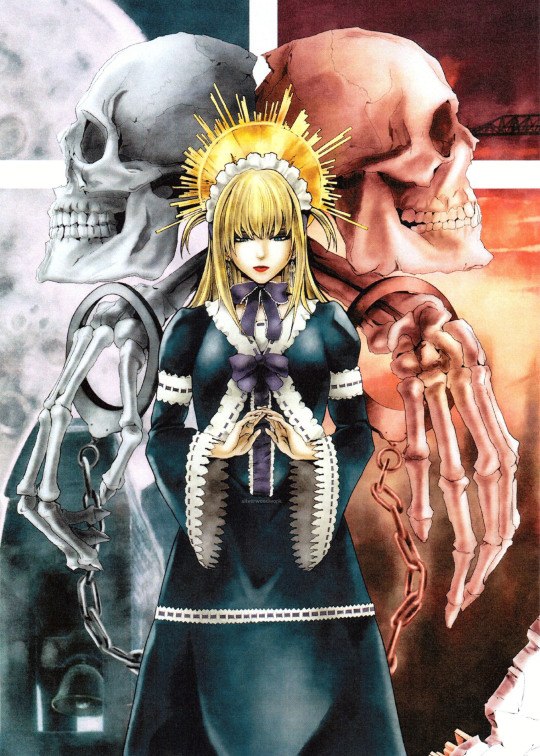
Started this as a tiny sketch more than 10 years ago, and I finally finished it...
Interesting how she wore this in the anime JUST before a major character died
#Misa Amane#Death Note#Amane Misa#デスノート#弥 海砂#death note manga#death note anime#copic#copic art#tsugumi ohba#takeshi obata#death note spoilers
269 notes
·
View notes
Text
I am so frustrated about the unpopularity of Bakuman. This manga is so brilliant. Imagine reading a manga about manga, the anime, the mangaka, the seiyuu, their personal and professional life, their inspirations and hardships. I just love the idea.
I can't explain how good this manga is. Just read it. Or you can watch the anime. I love the Opening Song too. It just makes me feel hopeful and passionate for my dreams.

After watching the anime, it will broaden your perspective on the other side of reading manga and watching anime. The respect for the people behind will never be the same.
8 notes
·
View notes
Text

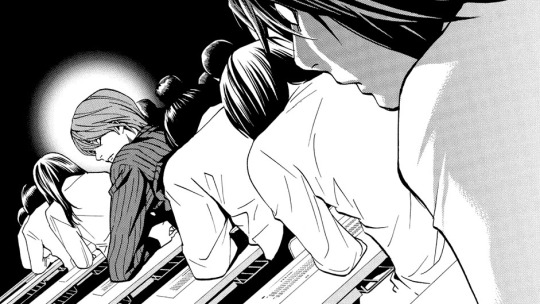

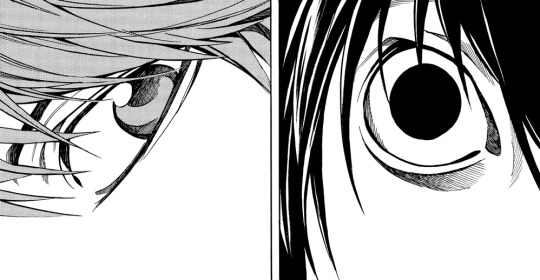
Death Note (デスノート) // Tsugumi Ohba & Takeshi Obata
2K notes
·
View notes
Text

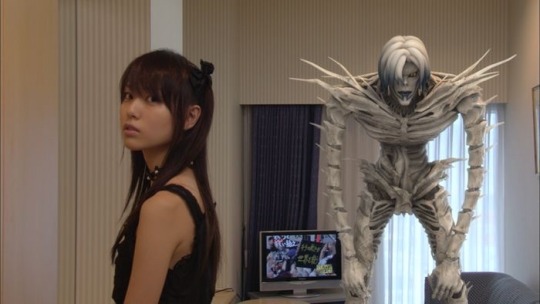
デスノート Death Note (2006)
#death note#death note live action#death note movie#anime and manga#light yagami#misa amane#ryuk death note#kento yamazaki#tsugumi ohba#takeshi obata#death note manga#l lawliet#erika toda#2000s emo
126 notes
·
View notes
Text

♰💀MINORU AND MELLO 🌟(♰ D E A T H N O T E ♰)🌟💀 FAN ART ♰
#deathnotemello#fanart#deathnote#minorutanaka#deathnoteoneshot#stickers#deathnotefanart#art#digitalart#mihaelkeehl#Mello#libretadelamuerte#anime#manga#artwork#animation#procreate#artedigital#artists on tumblr#fandoms#digital fanart#my fanart#takeshi obata#tsugumi ohba#ryuk#lawlight#l lawliet#soichiro yagami#sayu yagami#death note
51 notes
·
View notes
Text









Death Note
manga written by Tsugumi Ohba
illustrated by Takeshi Obata
#fizz moodboards!#fizz recs#deathnote#death note#death note manga#anime moodboards#misa amane#light yagami#l lawliet#tsugumi ohba#takeshi obata
34 notes
·
View notes
Text

#Death note#Tsugumi Ohba#Takeshi Obata#manga#manga cap#mangacap#manga aesthetic#manga panel#manga art#b/w#black and white aesthetic#Light Yagami#light Yagami death note#manga boy#manga guy#Ryuk#ryuk shinigami#ryuk death note#Gothic#goth#black#dark#monster#horror#scary#Flying#Japan#Urban#Stalking
80 notes
·
View notes
Text

#this is how it feels trying to pull the Netflix password from my mom#squidolusreads!#death note#tsugumi ohba#takeshi obata#viz media#young adult#Light#light yagami#death note volume 2#shinigami#l#l lawliet#anime#anime and manga#manga art#death note anime#death note manga#Soichiro Yagami#ryuk#ryuk death note#Naomi Misora
204 notes
·
View notes
Text
♰ Religion in Death Note ♰
One of the most fascinating things about Death Note as a franchise is its exploration of faith and religion in the context of the world building, and how it compliments this using Christian motifs and imagery. The latter is often portrayed superficially, which I think is a shame given that there are many occasions throughout the series where relationships that some characters have with faith could be examined in accordance with the world Ohba has created.
For the sake of simplicity, I'm going to consider two main religious influences in the world of Death Note:
The Canon Explanation (The Shinigami Realm, Rules of the Death Note, Mu as the Afterlife, etc.)
Christianity (specifically, the use of Catholic imagery in Ohba’s official art.)
Let's begin with Canon.
i. The Canon Explanation
Ohba is clearly partial to weaving a complex web of rules as a means to support the supernatural premises of his stories (see Platinum End). This makes The Canon Explanation so effective not only because it limits the behaviour of the characters throughout the text, but it is also very pertinent to religion conceptually. By listing out the apparent commandments of the Death Note, a set of religious principles have been established that the users of the Death Note must follow. While you are not technically committing a sin by, let's say, trying to kill someone over the age of 124 with the Death Note (x), it sets out a guide which is indicative of rules one might follow in a religious text. You could say that Light, Misa, Mikami, and Takada each had to have a level of faith in the Death Note in order to use it. They all followed the rules, even if they did so under Light's direction as their self-proclaimed God. Light’s familiarity with these rules and his confidence with manipulating them is what ultimately makes his reign as Kira so effective. I think the act of writing a name down in the notebook itself is a form of commitment to belief – as a concept, the Death Note seems too absurd to a sceptic.
When the Shinigami begin arriving in the human world, it is obvious that they are not divine beings in the perfect, omnipotent manner that humans may expect. If anything, they are curiously quite human themselves – forgetting rules and acting as a result of emotional impulses. It is indeed Ryuk's boredom that sets the story into motion – everyone who died as a result of the Death Note did so because of him. The Shinigami pose no actual threat to the humans they follow, often noting how humans appear more competent at being Death Gods than they themselves are. While this is subjective, depending on interpretations of faith, the typical Grim Reaper figure is seen as a serious, all-knowing figure that is to be feared, while the Shinigami of Death Note are far less intimidating. I think this delivers a decent proposal that religion in Canon is not a matter of worshipping the supernatural, or suggesting that they are better than us. By having the Shinigami presented as being similar to ourselves, human characters have the ability to use their power without the fear of divine retribution. Light’s extensive knowledge of the Death Note rules and how to work around them, along with his strict work ethic, only further demonstrates his commitment to carving out his position as God when compared to the Shinigami.
Mu is explained quite simply – there is no heaven or hell. There is a notable lack of elaboration here for a reason, but I do wonder if Light might have been more reluctant in his pursuits had traditional heaven and hell been at stake. Would he have become Kira if his act of justice would damn him to hell? Would he be concerned that his victims might end up going to heaven? Mu is the Canon version for what happens when one dies in this universe, so, beyond proposing speculative questions, there is little to analyse here.
Now, there is one character who I want to delve deeper in relation to The Canon Explanation: Mikami.
Mikami -> Mikami is deeply devout. Of all the named characters in the series, Mikami is the only one who is expressly religious, particularly regarding the Canon Explanation. While I think it is interesting to consider Light Yagami's relationship to Godhood, it is only through Mikami that we understand Kira’s societal impact. Mikami is also the only character in Death Note to be granted a rather comprehensive backstory, so we are given an insight into what led him to become such an ardent Kira supporter. Light chose Mikami not just for these strongly held opinions but also because of his devotion to him specifically. Mikami is ritualistic in the way he worships the idea of Kira through his dedication to writing one page of names in the Death Note daily, following Light’s commands without question. The only other occasion where we see a similar act of religiosity towards Kira is at the very end of the manga when a group of Kira supporters take a pilgrimage to pay their respects. Yet even this does not quite encapsulate Mikami's religious fanaticism. His strong conviction that Kira is God demonstrates the societal inclination to view Kira as a religious figure to be worshipped.
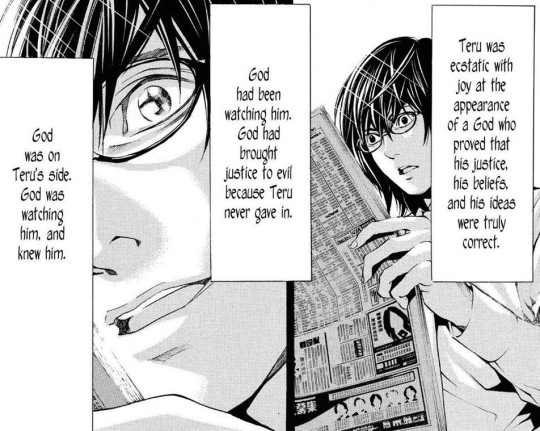
I think because Death Note relies so strongly on Light's internal psychology as he encounters various forms of opposition, the external impact of Kira on the world is only provided to us through passing mentions of political support. It is absolutely crucial to interpret Kira in a political context, but again, this is not really explored in too much detail. What we do know is that Kira supporters, including Misa, Mikami and Takada, may politically be in favour of Light's moral judgement, but because he poses himself as a God rather than a political leader, we must assume that he wants to play into a deific persona because it affords him far more unconditional power than he would have as a mere mortal.
From the beginning, Light is able to present his power as originating from a divine source, and it is only until Lind L. Tailor’s death that it becomes apparent what limitations Light is working within. Before then, criminals dying of heart attacks across the world could not be considered to be within human capability, let alone performed by a singular perpetrator, so Light maintained the illusion of omnipotence. Distancing himself from his humanity not only gave Light the benefit of being undetectable for some time, but also encouraged people to support Kira through the belief that he was inherently above them. It was only L who managed to shatter this façade early on in the Kira investigation.
I will now move onto something slightly more tangible, as it reflects our world within the text – Death Note's use of Catholic imagery.
ii. Christianity
As if to make up for the lack of exploration into Kira's religious influence, Death Note heavily relies upon Christian imagery to highlight its desire for religion to be seen as a core component of the franchise. Realistically, I am aware that a lot of manga and Japanese culture from the 2000s was heavily inspired by Catholic imagery and that there was certainly an aesthetic trend being taken advantage of here. However, I am still going to consider it specifically in relation to Death Note. It gives me an excuse to move on from Ohba to Obata anyhow, which I am more than willing to do.
Let's have a look at some official art.



There's a lot to be discussed about these specific pieces of art, and there are plenty more examples that I am sure can be found and analysed over, but we can recognise what their general theme is – kitschy Catholicism. This is not intended as criticism, I love Obata's art and as unsubtle as these official pieces may be, they reinforce Death Note's desire to incorporate religion into its series as a strong motif, if not an effectively developed theme. It also somewhat exposes its superficiality. The imagery is explicit, bold and bright, without doing much work in considering what the actual religious belief might be able to bring to the series beyond the visual components (according to this post -> x the Latin on the last image isn't rendered properly, which proves my point further). There are instances in the anime where there are Biblical references, such as frames that foreshadow L’s death, but the manga does not engage in these same parallels.
This leads me nicely onto talking about Misa.
Misa -> Misa is shown throughout the series to lean heavily into fashion and interior design that reflects a very Gothic Christian aesthetic, which is undeniably iconic and an important visual aspect to her character. Mirroring the series more generally, it does appear that this is the extent to her relationship with the Christian faith. Misa’s allegiance to Kira could suggest that the trauma of her parents’ death came to some kind of resolution when their murderer was himself killed. Again, we have no idea if she actually was a religious character to begin with and I need to stress, it does not matter, but it is still worth considering given how a lot of the Christian imagery in the series is associated with her character specifically. I don't think this feeds into any flat character analysis that might suggest she doesn't know the potential significance of the crosses she wears or decorates her home with. We could just say she has an aesthetic that is very well composed but doesn't carry much weight beyond its stylistic merit.


Derailing slightly, but I do wish they had maintained this style throughout the entire series. Alas, as soon as she met Light, she lost this cool Goth look pretty quickly. Rem would never have let this happen. 💔
One more character analysis before we wrap this up. The quite honest reason as to why I decided to write up this essay was so that I could discuss Mello in relation to religion in Death Note.
Mello → Much of what I discussed about Misa's style could be applied to Mello, the only other character who visually demonstrates any religious tendency. However, I think there are some differences here that could suggest Mello is actually religious, which then allows us to consider his character in the context of the Canon Explanation. Firstly, one of the main signifiers Mello wears is his rosary, and while it is unlikely you will experience any adverse effects from wearing one as a non believer, I think those who wear a rosary are aware of the deeper connection to Catholicism than someone who wears a simple cross necklace (see Misa above, right). Secondly, narratively, I think there is more opportunity for Mello to be religious. Wammy's House, from their gates, actually appears to be a Christian organisation, and while I do not actually believe that they were, I find it interesting nonetheless. I also would be surprised if they were denominationally Catholic, if we are following this line of logic, presumably they would be CofE, but who knows. Regardless, even if Mello was not religious as a child, I think his arrival into the Mafia would certainly have introduced him to Catholicism. Of course it seems antithetical, but I would not be all that surprised if a teenage boy who is expected to do some horrendous things to rise to the top of a criminal organisation might turn to God in the process.


Following on from the prior point, Mello is a completely contradictory character, so I do not think it is all that necessary to consider his moral code from an entirely rational perspective. I think the fact his Beretta has a small cross charm on it in itself is very symbolic of the kind of character we are dealing with here (see below). Interestingly, it looks to be a Celtic cross, rather than a traditional crucifix.

What does this actually mean? Mello represents a good integration of the two religious influences I've discussed – he appears to have faith in a religion that we as readers contextually understand, and yet he interacts easily with Shinigami and the Death Note. While the two do not contradict one another exactly, I think The Canon Explanation certainly does not lend much credence to Catholic interpretations within the text. Like the others who have encountered a Death Note, Mello is initially shocked by the arrival of the Shinigami attached to his notebook, but quickly recovers. He interrogates Sidoh with such evident effectiveness that he ends up frightening him.

I think this is where I begin to get a little frustrated with the depiction of religion in Death Note because we have such a fascinating premise here. Does Mello's faith waver as his beliefs are evidently challenged by Sidoh? Does he consider Kira as a force of evil from a moral perspective informed by Wammy's, or his understanding of God? Does he believe in heaven and hell? None of these questions are answered, and I do appreciate I am being fussy because I am very fond of Mello, but I think there was a rather unique opportunity present in the series that was completely neglected. I have already explained how Death Note relies so heavily on Catholic imagery and clearly wishes to present itself as a series that deals with religious themes, so I think there is a failure here to consider the nuances that have already been set up.
How interesting do you suppose it would be to see how Kira's influence begins to impact the other established religions, as people see criminals dying en masse? Remember that ordinary people would be likely predisposed to consider this as an act of God. Society would certainly be more scared, especially as it would simply be inevitable that Kira killed innocent people who had been deemed criminals by their legal systems. There is a lot to go analyse about that topic alone, but another time!
I suppose with a lot of the questions I have posed, they could be answered through fanfiction or headcanons. I could decide that Misa believed in God until she met Light, or that Mello chose to ignore the implications of Mu given that he follows a religion that sets itself up on the premise of eternal reward or damnation. I just want to facilitate further conversation, because I do think this topic is fascinating.
Thank you @saturniiids, @vengeflies and @stylooooo for giving this a read for me! ♡
#religion#christianity#catholic#mello#mihael keehl#light yagami#teru mikami#misa amane#death note#tsugumi ohba#takeshi obata#analysis#my essay#text post
116 notes
·
View notes
Text
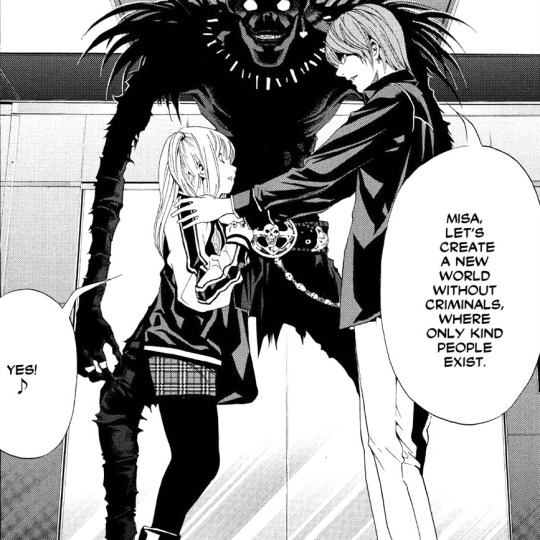
Death Note (デスノート) // Tsugumi Ohba & Takeshi Obata
791 notes
·
View notes

